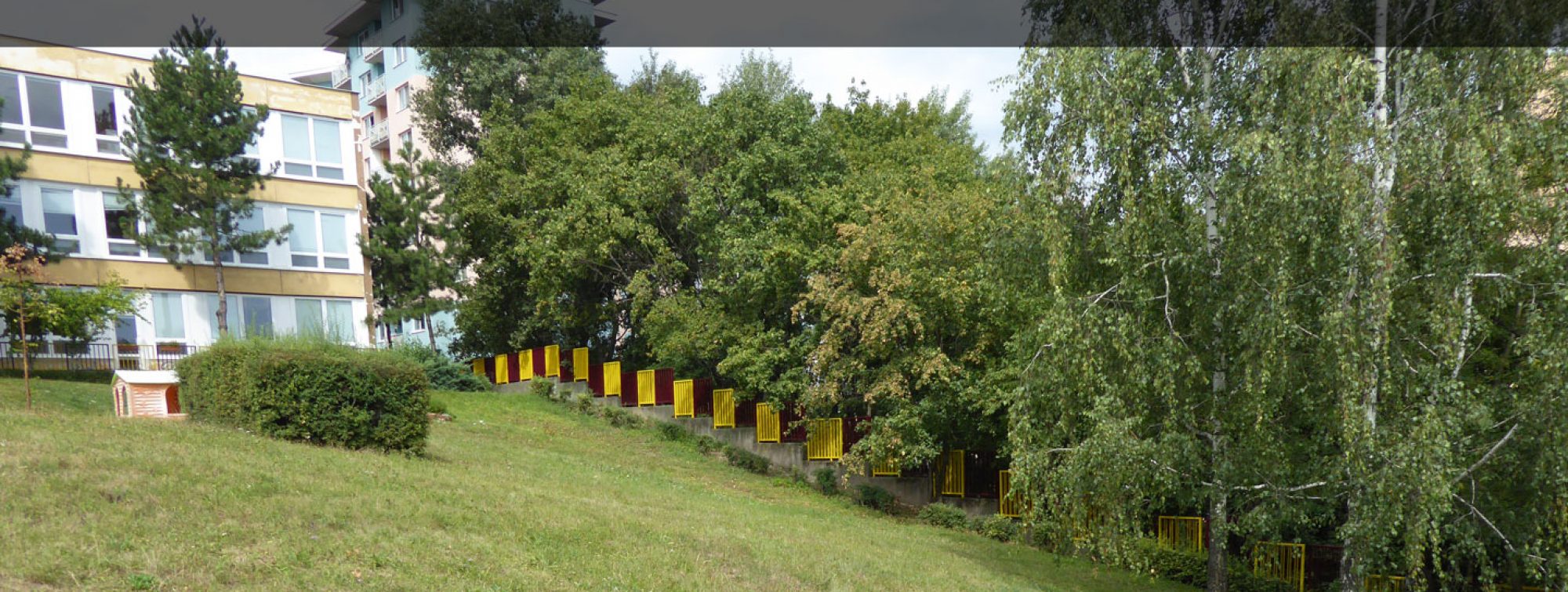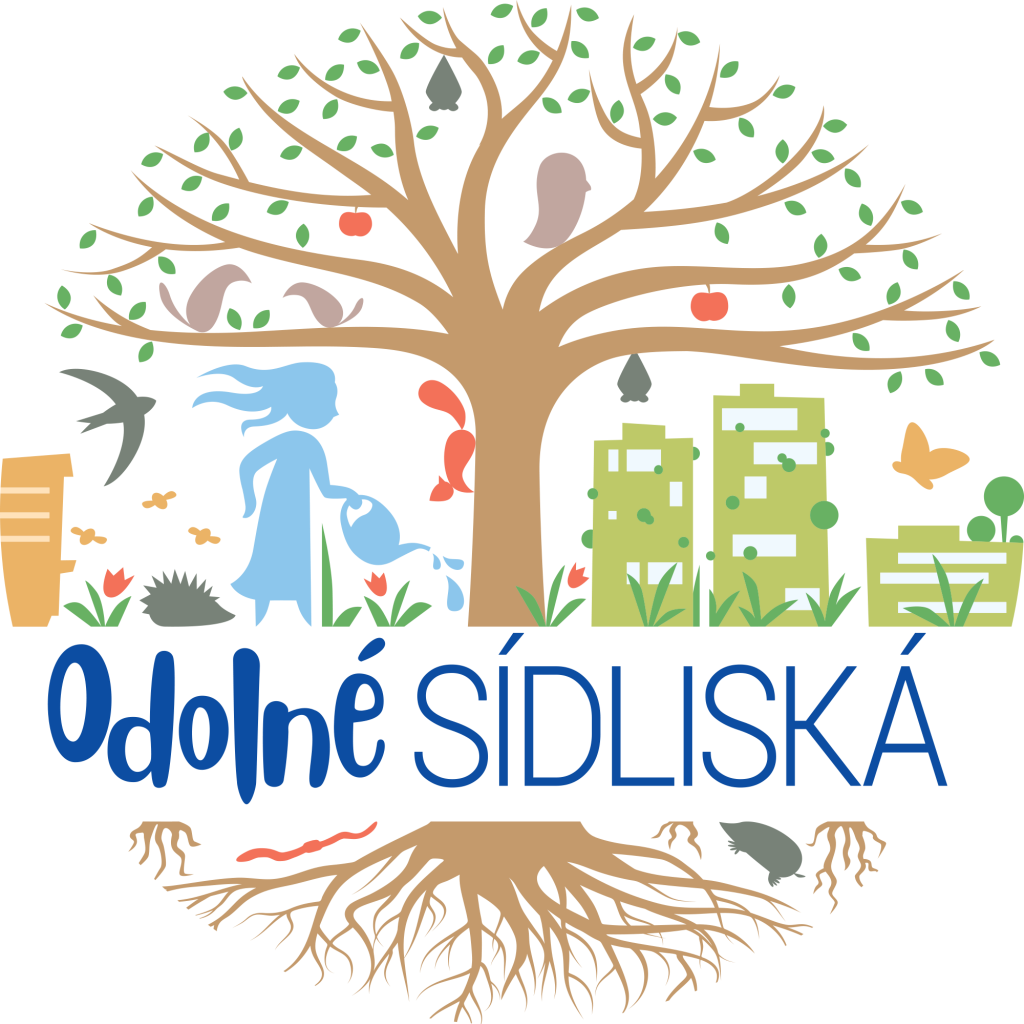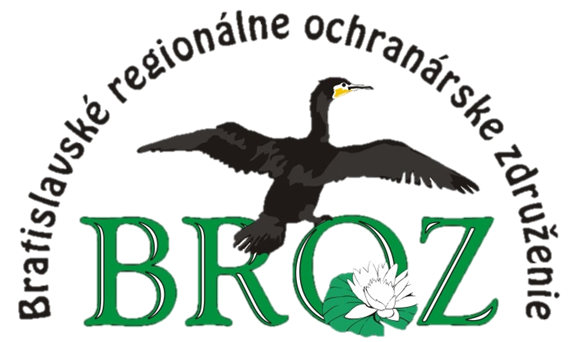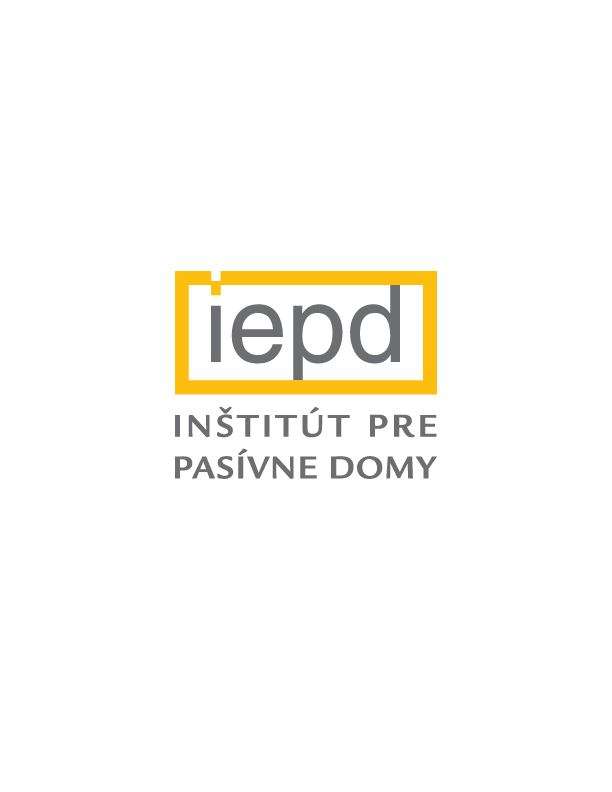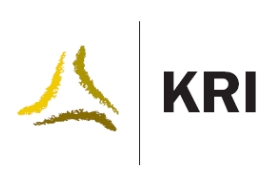About the project
Extreme weather in the form of summer heat waves, long periods of drought, or vice versa an increased number of torrential rains, windstorms and other extreme phenomena, forces us to accept that the negative impacts of climate change have already begun to manifest themselves in full force, and these impacts and their consequences will be multiplied. In Bratislava, the summer in 2018 was marked by two heat waves, with the first wave having a record number of 21 consecutive extremely hot days.
Such a situation has not occurred since 1871, when the first meteorological measurements and observation started in Slovakia. Our city was hit by two heavy rainfalls, that flooded several city sites, shut down the traffic and caused other restrictions. According to several scenarios, climate change impacts will be manifested increasingly more, especially in the residential areas.
Climate change comes with challenges that need to be addressed urgently. In Slovakia, almost one third of inhabitants live in districts/settlements that have been built since the mid-1950s. Although quality of panel housing districts varies depending on time and on the location where they were built, all of them have some similar features e.g. high degree of build-up areas, a high population density, as well as a lack of green areas and a low quality of public spaces.
In terms of environmental and climate characteristics, Bratislava-Karlova Ves Municipality can be characterized as:
- Very densely populated urban area, so any impact of climate change on a given site could negatively affect many people and cause a lot of material damages.
- The low construction quality of buildings where the effects of climate change have not been taken into account. The energy demand of prefabricated concrete residential buildings provide an opportunity to take cost-effective measures to enhance energy performance. Even the part of buildings stock has already been partially refurbished, the energy efficiency level is far behind the potential and new requirements based on the EC Directive on the energy performance of buildings. Moreover, the already realized building refurbishments did not take into the considerations the birds and bats nesting possibilities and this situation led to the decrease of birds and bats populations in general.
- The number of cars in is very high, which could lead to the cumulative negative effects especially during the summer heats period.
- Low quality of the green spaces that are not enabling the cool the environment and mitigate the impacts of climate change especially during heat.
- In majority of the panel buildings plastic windows have been installed as well as the thermal insulation of facades. However, these activities had been done in different quality and nobody had counted with protected animals living in the panel crevices and ventilation holes (ex. swifts and bats). New facade insulations also destroyed many nests of house martins that could not build their nests due to the smooth surface of the facade – they need abrasive surface to be able to stick the mud on it. It also happened that some people living in the buildings didn´t tolerate the excrements so they destroyed the nests. Alternative nesting options for house martins were not created at all. Swifts and bats were luckier and some block of flats were chosen to create optional nesting sites – nesting boxes have been installed on them. Birds are important in regulation of insects and they keep us from their outbreak. Unfortunately, majority of the people still don´t understand this relation and see the birds just like the producers of unwanted excrements.
- Lack of knowledge and practical examples of options for adaptation and mitigation particular in this kind of residential areas.
Moreover, the legislation ´s conditions are not sufficiently promoting/fostering the balanced measures adaptation and mitigation to climate change and there are even missing some principal standards, especially in the topic of sustainable rainwater management on national level, that could be further used by cities and municipalities. The awareness about all these “groups” of problems and possibilities how to overcome them with the balanced adaptation and mitigation solutions is lacking far behind not only on the level of local policy, principal actors and local politicians, administration and governance of the municipality level, but also among the local inhabitants and local community. These facts are resulting also to the actual absence of strategically development document (“Climate resilience Plan”), where the relevant measures will be proposed and systematically realized with the aim to secure the more livable environment, resilient to the climate change impacts in the future.
The negative “cumulative” effect is underlined with the fact, that the simple tool to measure, evaluate and present information in very easy and friendly way about the adaptation and mitigation current status, progress and partial activities of cities, city areas, and individual buildings is missing at all. The uncertainty is leading to the doubts about the advantages, cost effectiveness etc. of the possible mitigation and adaptations measures realization, because there is any logical prove especially for the deputies, senior management on leading position (in combination with the lack of awareness) for such climate resilience solutions.
The search for the relevant solution should be adequately balanced not only among the adaptation and mitigation approach, finding the synergic effects in the way to increase the climate resiliency but the promotion of biodiversity through the „nature based solutions“. The rich biodiversity of the European Union has been subject to slow changes over the centuries, due to the impact of human activities. The importance of urban biodiversity increases constantly. Urban biodiversity may refer to plants and animals that occur within the built environment, or it may refer to remaining biodiversity that occurred in the area long before people built their structures. The special interest to protect biodiversity has to be considered in residential areas due to the fact, that e.g. many of the species are living and nesting on and inside the concrete prefabricated buildings (e.g. the common swift (Apus apus), bats, etc).
Moreover, the adaptation actions based on the use of the green and blue infrastructure in residential areas will provide the important habitats for breeding, shelter or food (e.g. trees provide shelter and food for a variety of birds and small animals, wet area have not only the rainwater retention importance but offers living space for different species as well).The project will therefore explore the possibilities of positive synergies among the adaptation, mitigation and biodiversity protection. As concrete example could serve the greenspace nature friendly maintenance, e.g. reducing the lawn moving, especially during the summer hot and dry periods will have the positive effects on biodiversity, providing flowers and shelter for insects and pollinators and in the same time the reduced cutting of grass will decrease the CO2 emissions. This simple measure will have the “adaptation” aspect as well, keeping more humidity will result in the lower temperature in comparison with the shortly cut and desiccated grassy areas, that could reach more than 44 °. Therefore, the project is the contribution to the implementation of the Fauna-Flora-Habitat Directive, Birds-Directive, to the EU Green Infrastructure Strategy (2013). The project takes into account the objectives of the European EU biodiversity strategy to 2020 (2011) as well as the national Biodiversity Strategies.
The main project goal is balancing adaptation and mitigation efforts in residential areas consisting of prevailingly prefabricated buildings with the aim to increase their climate resilience, to reduce the carbon footprint. It will result in higher health and living comfort for local citizens, greater property protection, saving of financial resources of citizens and municipalities and in higher biodiversity.
To reach this overarching goal there are the following partial objectives to meet (in process sequence):
Project objective 1: To raise the knowledge base in the area of common consolidated climate resilience and carbon footprint assessment and monitoring progress in the urban residential areas consisting of prevailingly prefabricated buildings (hereafter referred to as residential areas).
There is a missing user-friendly methodology “tool” for common consolidated climate resilience and carbon footprint assessment in residential buildings and areas to help to decide about implementation of adaptation and mitigation measures.
Project objective 2: To promote and demonstrate the integrated adaptation and mitigation approach (enhancing synergies and reducing antagonisms) with emphasis on eco-based climate solutions and biodiversity promotion, demonstrated in the residential areas of the Bratislava Municipality Karlova Ves.
Absence of “climate resilient” adaptation and mitigation plans with specific action for implementation and with relevant timetable is characteristic for residential areas, as well as absence of concrete demonstration adaptation and mitigation measures on public, residential buildings and public open spaces. This situation requires demonstratives as well as innovative solutions of prototype character.
Project objective 3: To increase the inclusion of residents into the process of combating the climate change to strengthen residents’ climate safety and the promotion of biodiversity.
Public participation and involvement are crucial factors in building climate more resilient community.
Project objective 4: To propose changes and improvements in the national climate legislative environment.
These proposals shall enable changes of the national and local legislation towards supporting climate resilient measures in construction, retrofitting of buildings and its surroundings.
Project objective 5: To increase awareness and promote project DELIVER approach to enable other cities in the EU with similar climate problems access to project results.
15 June, 2018 – 15 June, 2023
A.1: Preparatory actions to the demonstration activities in relation to implementation of the concrete innovative measures on public buildings
A.2: Preparatory action of concrete innovative measures on open public space with public participation method in the pilot residential areas of Bratislava-Karlova Ves Municipality
C.1: Development and testing Climate Resilient Low Carbon Factor (CRELOCAF)
C.2: Development, implementation and evaluation of Climate Resilient Low Carbon Action Plan (CReLoCa AP)
C.3: Demonstration activities and implementation of concrete innovative measures on public buildings
C.4: Residential buildings proposal for retrofitt and quantification of energy potential savings for the residential housing stock in Bratislava-Karlova Ves Municipality
C.5: Demonstration activities and implementation of concrete innovative measures on open public space with public participation method in the pilot residential areas of Bratislava-Karlova Ves Municipality
C.6: Implementation of demonstration adaptation measures on buildings and open spaces for enhancing biodiversity within the cities
C.7: Building Low-carbon resilient community through the creation of Community Climate and Biodiversity Educational Centre (CoCliBEC)
C.8: Proposition of the national and local legislation changes and active collaboration on preparation of amended or new relevant acts/documents towards supporting climate resilient measures in construction and retrofitting of public and residentional building and surrounding open spaces
D.1: Monitoring of the effectiveness of project adaptation and mitigation actions and impact of the project actions on biodiversity within the residential area of Karlova Ves
D.2: Monitoring of socio-economic impact of the project
E.1: Communication and dissemination of results to general public in local, national and international media (workshops, conferences, seminars, study tours, guidebook …). Dissemination actions to decision makers
E.2: Networking and information sharing with other relevant projects and institutions in EU
F.1: Overall project management
F.2: After LIFE plan
A1: Under this activity, the detailed technical project documentation (the blueprint), necessary for the complex deep renovation of two buildings (Elementary school A. Dubceka and Kindergarten Koliskova) will be elaborated. The main objective of such refurbishment is to get as close as possible to zero energy standard, to achieve a significant improvement in the indoor air quality and the overall quality of the school environment and to reach proposed low carbon goals. Variety of innovative green solutions, improving rain water management (capture and secondary utilization), using vegetation roofs and walls supporting biodiversity will be proposed. These prototype solutions should be replicable not only on similar public buildings in Slovakia but also in other European cities and towns. The basis for the detailed technical project documentation will be provided through the architectural study and further recommendations and requirements elaborated by MUWOG.
A2: Based on the data from the vulnerability assessment of various parts of Karlova Ves (identification of the most vulnerable areas), the concrete public space will be selected for implementation of measures to reduce the impacts of the climate change. Through the participative process, the local inhabitants will be involved in the co-creation of the design and new function of the selected public space. The output of this public participation process will provide the design brief and recommendations for the elaboration of the detailed blueprint required to obtain the building permit.
C1: The tool “Climate Resilient Low Carbon Factor” is evaluating in a very effective way multiple aspects of adaptation (vulnerability, exposure, sensitivity, adaptive capacity, resilience, adaptation measures) and mitigation (emission balance, modeling, emission reduction). Based on selected indicators, it provides a comprehensive assessment of climate resilience at the level of Municipality, district and on the level of the buildings. It enables data management, presentation of indicators through tables, charts and maps, planning and modeling of emissions development, proposes necessary adaptation measures and benchmarking of the cities involved.
C2: This strategic document will serve as a base document for defining the further development of Karlova Ves with aim to build long-term climate resistance, to reduce greenhouse gas emissions, enhance energy efficiency and promote the adaptation to climate change negative impacts. It will contain specific adaptation and mitigation measures to be implemented, information on potential benefits, development options, responsibilities, key milestones, key areas and expected results of the implemented measures.
C3: Based on the detailed technical project documentation (the blueprint) prepared through the activity A1, the deep renovation of Primary School A. Dubčeka and MŠ Kolískova will be implemented. The demonstration nature-based solutions will enrich the learning process in both institutions. Also, Community Climate Educational Center (activity C7) will be established in Primary School A. Dubčeka, as the educational and community center explaining and promoting applied measures (using the RES capture and secondary utilization of rain water, green roofs and walls, animal habitats, community garden). Monitoring of the buildings (management, energy requirements, nesting of birds, etc.) will be possible also via internet. From the reason that such public buildings, with very low energy performance, bad indoor air quality, overheated during sunny days, with the high water consumption, with large surface of roofs, where the whole rainwater is led into the sewage system, such prototype solution has a very high potential for replicability.
C4: The main goal is to analyze the energy savings potential of different residential buildings in Karlova Ves with aim to lower their energy consumption and raise the quality of housing. The output of this analysis will serve as the information material describing the reasons and the importance of in-depth renovation of residential homes, recommending procedures and methods to be used, providing economic data and important inputs for the implementation of proposed solutions in similar residential homes in Slovakia as well as elsewhere in Europe.
C5: Based on the detailed technical documentation prepared through co-creation participatory process under Activity A.2. specific mitigation and adaptation measures will be implemented on the selected public area. The emphasis will be on promoting biodiversity, sustainable rain water management (bioreactors, ponds, catchment areas, ditches, etc.), use of permeable surfaces and vegetation (planting of trees and shrubs, creating green separating strips, using alternative types of vegetation), use of specific materials (waterproof, light colored and reflective surfaces) and sustainable mobility fostering (cycling).
C6: The practical measures will be implemented to improve the living conditions of wildlife habitat and local species in the pilot areas of Bratislava-Karlova Ves. The aim of this activity is to prepare public spaces attractive for wildlife and allow the original species to return and provide them the shelters and food (nests, insect hotels, hives, hedgehogs houses). These measures will increase biodiversity, improve living conditions of the different species, especially facing to the threats of climate change. An important element in the implementation of these activities is cooperation with local residents and school children. These measures will bring more greenery and liveability to residential areas and public spaces.
C7: The principal aim of the Community Climate and Biodiversity Educational Centre (CoCliBEC) is to build the low-carbon resilient community. The center will serve for raising awareness of inhabitants of residential areas to foster the community life as a part of social climate resilience and to raise awareness about the climate change. The promotion of biodiversity in residential area has been equally taken into account.
C8: The analysis of selected legislative acts (especially the Building Act and the Nature and Landscape Protection Act) is expected to be realized and will be carried out by the project expert team. The recommendations for the amendments inspired by foreign experience will be elaborated and proposed to the relevant bodies as well. The missing new standards for the sustainable rainwater drainage system will be drafted. This activity includes a series of advocacy and lobbing activities with relevant bodies and stakeholders.
D1: This project activity will monitor the effectiveness of selected implemented measures. Monitoring will be carried out before the implementation of the project in Karlova Ves (mapping the current status) as well as after the implementation of the measures.
D2: Socio-economic monitoring captures the perception of realized project activities by the public and increasing its awareness of climate change mitigation and adaptation issues during project implementation.
E1: The outputs of the project activities will be disseminated by various means with respect to the target groups and spread within the professional and lay public in Slovakia as well as abroad.
E2: This activity involves collaboration, sharing information and networking with relevant partners, various activities for professionals, the general public, visitors and stakeholders. The goal is to disseminate information, raise awareness and share experiences with possible future replication in other cities.
F1: Project management represents the overall management and coordination of activities and activities of all project partners, project progress monitoring and technical and financial reporting by donors.
F2: The Sustainability Plan of the project will include a description of how activities will be carried out after project completion, which activities will take place, when and who will implement them and from which sources will be funded. An action plan to reduce the carbon footprint and increase climate resilience will be implemented gradually over the next years after the end of the project. It will be funded from a variety of sources – the self-government budget, structural funds, various grant schemes, the state budget, the enviro-fund, and the loans from banks that decide to engage in project results.
1) Mestská časť Bratislava-Karlova Ves – coordinating beneficiary/lead project coordinator
2) BROZ – Regional Association for Nature Conservation and Sustainable Development
3) CI2, o.p.s. – a non-profit organization focused on sustainable development, education, publishing, and science and research
4) IEPD – Institute for Passive Houses Slovakia, an association of natural and legal persons to promote the application of the principles of passive homes and sustainable architecture
5) KRI – Carpathian Development Institute, an independent expert institution on climate change
- Donor: The project is funded by the European Commission, by the financial Instrument for the Environment: Program LIFE for the period 2014 – 2020 established by the regulation No 1293/2013 of the European Parliament and of the Council of 11 December 2013 on the establishment of a Programme for the Environment and Climate Action (LIFE) and repealing Regulation (EC) No 614/2007, subroutine Climate Protection.
- Contract with donor: Grant agreement LIFE17 CCA/SK/000126, ANEX I_agreement_general_conditions, ANEX II_part A_administration, ANEX II_part B_technical-summary, ANEX II_part C_detailed-technical-description, ANEX II_part F_financial information, ANEX II_part F_performance indicators tools, ANEX III_IV
- Grant amount: 1 467 913 EUR (the overall contribution of the European Commission – together for all project partners)
o The overall project budget – all project partners together:
• Total project costs: 2 446 523 EUR
• The overall contribution of the European Commission (60%): 1 467 913 EUR
o The total budget of the Bratislava-Karlova Ves Municipality:
• Project costs of the Bratislava-Karlova Ves Municipality: 1 572 140 EUR
• The contribution of the European Commission: 943 284 EUR
- Co-financing: 978 609 EUR (the overall co-financing – together for all project partners)
- Location of project implementation: Bratislava-Karlova Ves Municipality
